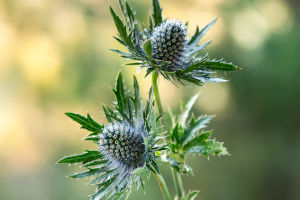Have you ever blown a dandelion and watched the little white puffs dance in the air? Today, we are about to step into the magical world of dandelions together. Dandelions, also known as Taraxacum, belong to the large and diverse daisy family.
These bright yellow flowers are common in temperate to subtropical regions, quietly thriving by the roadside, in fields, and on hillsides.
Dandelions have a fascinating origin. The English word "Dandelion" comes from the French phrase "dent-de-lion," meaning "lion’s tooth," referring to the jagged shape of its leaves. The scientific name Taraxacum is believed to come from the Persian word "tarashqun," a tribute to the plant's long history. Interestingly, many dandelion species reproduce asexually, which explains why they are so widespread!
How to Recognize a Dandelion: Not Just a Pretty Face
When we look closely, we find that dandelions are perennial herbs standing 10 to 25 cm tall. They contain white milky sap inside, and their roots grow deep and strong, with a brownish-yellow skin. The leaves are arranged in a rosette at the base, shaped like narrow, reversed lance heads with pointed lobes — smooth-edged or lightly toothed.
Dandelion flower stalks are usually as tall as the leaves or shorter. When the seeds mature, the stalk stretches longer and is covered in fine, silky white hairs. The bright yellow flower head, about 3.5 cm across, is made up of many small florets. Each seed is like a tiny brownish spear with ridges and a little hook, topped by a white parachute of silky hairs — ready to float away in the wind!
The Dandelion's Amazing Life Cycle: A Story of Resilience
The dandelion’s flowering seasons are early spring (April to May) and late summer to early autumn (August to September). As winter ends and spring approaches, dandelions send out flower stalks, each holding a single bright yellow bloom. After pollination, the flower transforms into the iconic fluffy white ball we love. When a breeze blows, the seeds travel like tiny parachutes, planting new life wherever they land.
Isn't it amazing? A single puff can send dozens of seeds into the air, giving dandelions the ability to quickly spread and thrive in different environments.
What About "Fake Dandelions"? Know the Difference!
Some plants, like catsear (Hypochaeris), look a lot like dandelions and are even nicknamed "false dandelions" in English-speaking regions. But we can spot the differences easily!
Real dandelions have flower stalks that do not branch, are hollow, and usually smooth. Their leaves are soft and clean-looking. On the other hand, catsear plants have solid, branching stems with small leafy bracts and rough, hairy leaves.
Next time we see a yellow flower, let’s check if it’s a true dandelion or just a clever look-alike!
Why Are Dandelions So Diverse? A World of Their Own
Thanks to asexual reproduction, dandelions come in countless varieties. Back in the 1970s, there were two ways scientists classified them: either grouping about 60 larger species or splitting them into around 34 groups — each with many tiny variations. By 2015, botanists had sorted dandelions into about 60 groups and an astonishing 2,800 micro-species!
Each little variation is a result of small differences passed down when they reproduce without mixing genes. That’s why, when we look carefully, no two dandelions are exactly the same.
A Little Plant with a Big Dream
Lykkers, isn’t it inspiring how a tiny dandelion seed can travel far and wide, carrying the dream of new life? Maybe, like dandelions, we can also spread hope and happiness wherever we go. Next time you spot a dandelion, remember: even the smallest things can create amazing change.
Let's keep wandering, keep dreaming, and just like the dandelion, keep spreading positivity everywhere!


